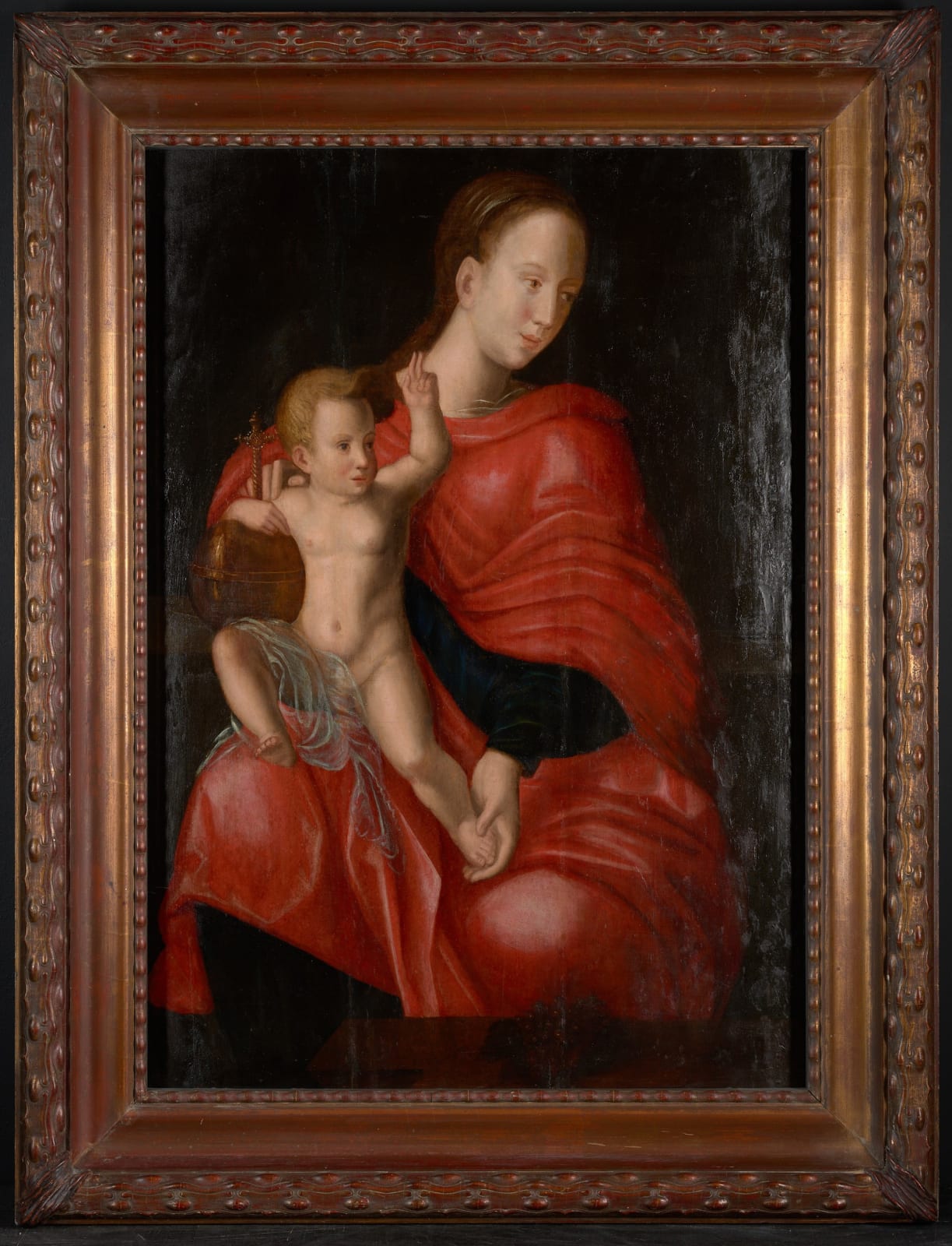16th C late or early 17th C, Biblical, Manner of Joos van Cleve, Madonna with Child, Oil on Panel, 105 x 73,5 cm
17th Century
Oil on panel
105 x 73.5 cm
41 3/8 x 29 in
41 3/8 x 29 in
1799
POA
Further images
Attentive observer, may I challenge you to find some unusual elements in this panel painting? One detail has to do with the symbolic use of color, the other with a later adjustment ofthe image. Indeed! The Blessed Virgin is not dressed in her usual sky blue cloak, which refers to her purity, but in a red robe. During the Late Middle Ages and early Renaissance, the Virgin often wore such a red garment to refer to the Passion of Christ. After all, the blessing Christ child with his orb would shed his blood for the redemption of mankind. The second strange element catches the eye when one looks closer at the little Jesus. It appears that he was originally depicted completely naked, but got on a transparent loincloth over time. In the past there were several times when nudity in art was subject to some form of censorship. For example, the supervision of Christian art was strongly encouraged by the Council of Trent (1545-1563). This assembly was dealing with the inner-ecclesiastical reform of the Roman Catholic Church. One of the important theologians who followed the council’s guidelines was Joannes Molanus (1533-1585). He did not consider the nakedness of the Christ Child to be edifying and pointed out that children could be endangered in this way. He may have been referring to the dangers of pedophilia. During the 19th century, puritanism emerged. A famous example of a moral preacher was Pope Pius IX. In 1857 he had the genitals cut off from all male nude sculptures in the
1
van
275
Join our mailing list
* denotes required fields
We will process the personal data you have supplied in accordance with our privacy policy (available on request). You can unsubscribe or change your preferences at any time by clicking the link in our emails.













